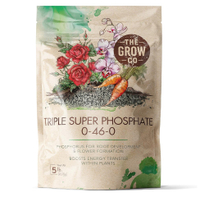9 winter flowers you should plant right now for a vibrant Christmas garden
Flowers don’t only bloom in the spring
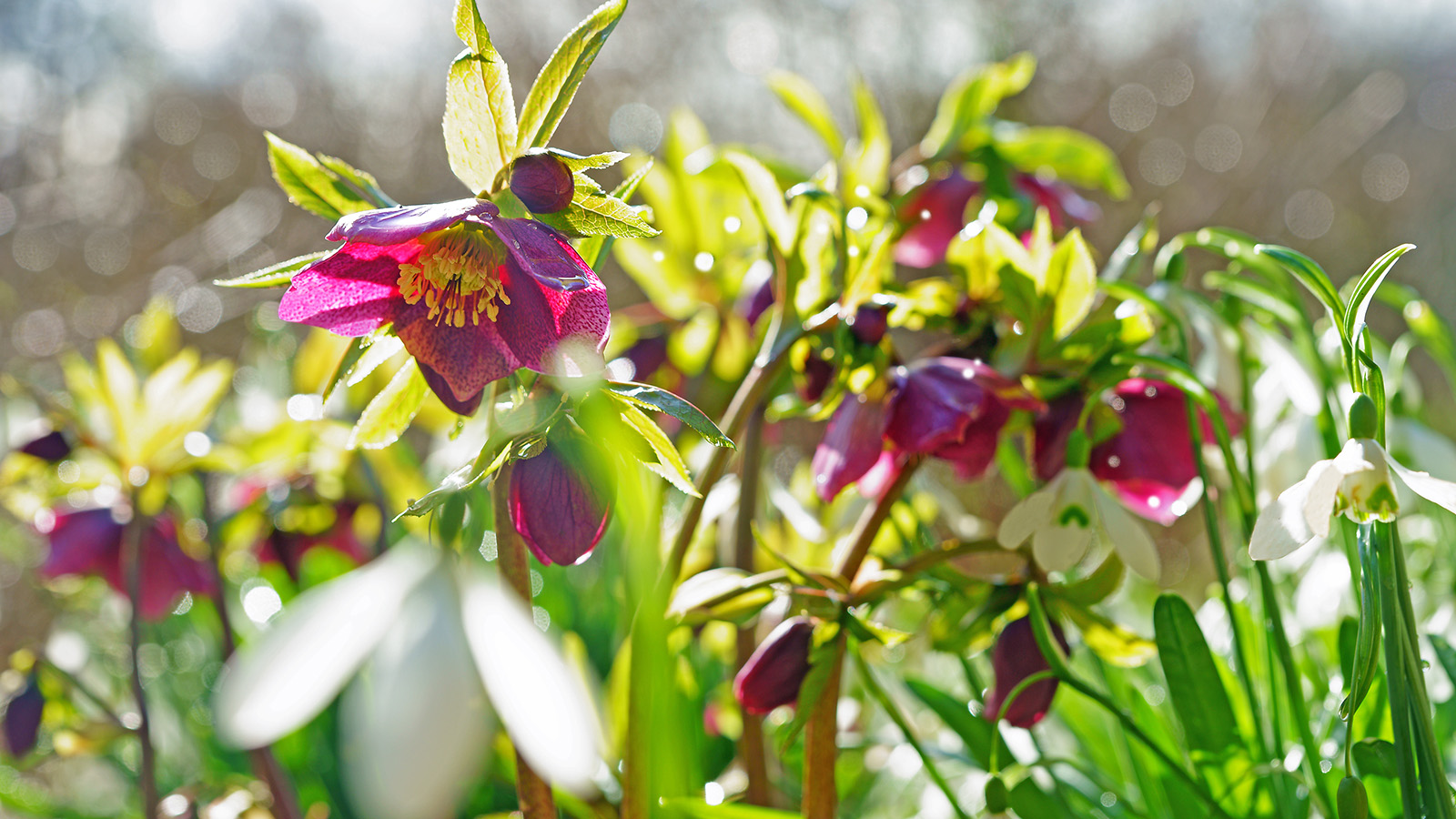
Winter is full of seasonal delights, but we don’t normally associate this time with vibrant flowers. Most plant species flower in the spring and summer, before lying dormant during the coldest months. This can leave the garden looking a little drab and lifeless, and your gardening gloves and pruning shears gathering dust, especially since many trees and shrubs will also lose their leaves at this time. The good news is that it doesn’t have to be this way. If you’re looking to inject your yard with some color this holiday season, then you’ll need to look for winter-flowering species and plant them now, so that they bloom in time for Christmas.
There are several varieties that actually thrive in the cold weather. If you live in extremely cold conditions then you’ll need to be wary of harsh frosts, but many of these flowers can stand up to a light snow – and will look especially dramatic against the white backdrop. The key is to plant them early enough, when the ground is still soft, so that the seeds can take root and mature enough to weather cold temperatures. By acting now, you can set your garden up for a vibrant winter period and a colorful new year.
Here are 9 different plant species that will add an infusion of color to your garden this winter:
1. Camellia
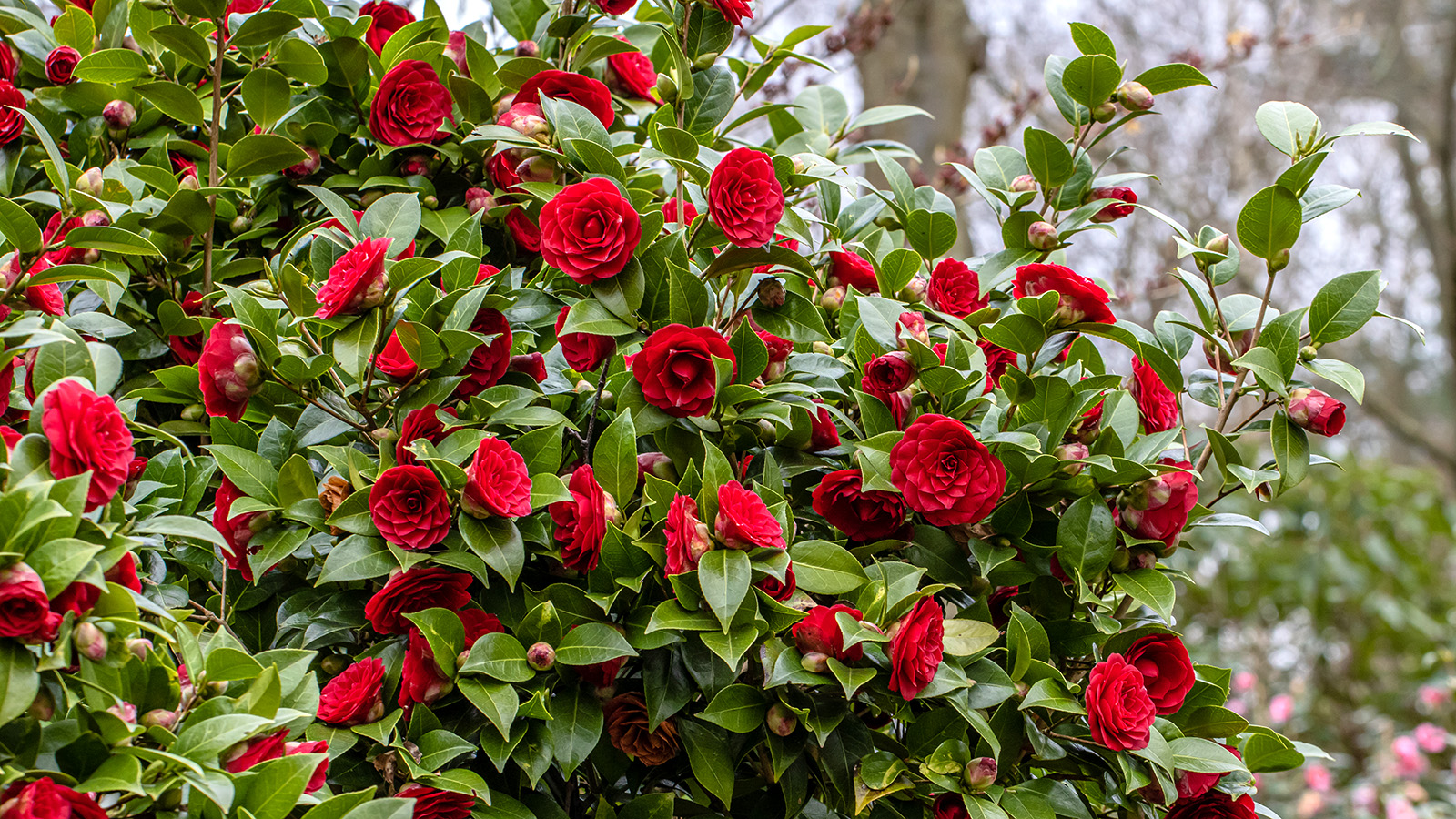
The camellia is a favorite among winter gardeners, thanks to its glossy dark leaves and bright, almost fluffy flowers that bloom in late autumn and early winter. The flowers have many petals and will bloom year after year, if tended properly. You can find camellias in two main sizes: Large, tree-like plants and smaller, low-lying shrubs. You can also choose from a range of colors, from palest white to deepest red, so it’s easy to find something that will suit your specific garden.
This plant is also ideal if you have a particularly shady garden, as they can grow in shade or partial sunlight; as they mature, they will be able to withstand stronger sunlight.
Camellias like well-drained yet moist soil and should be planted near the surface of the soil, ideally in slightly acidic conditions.
2. Hellebore
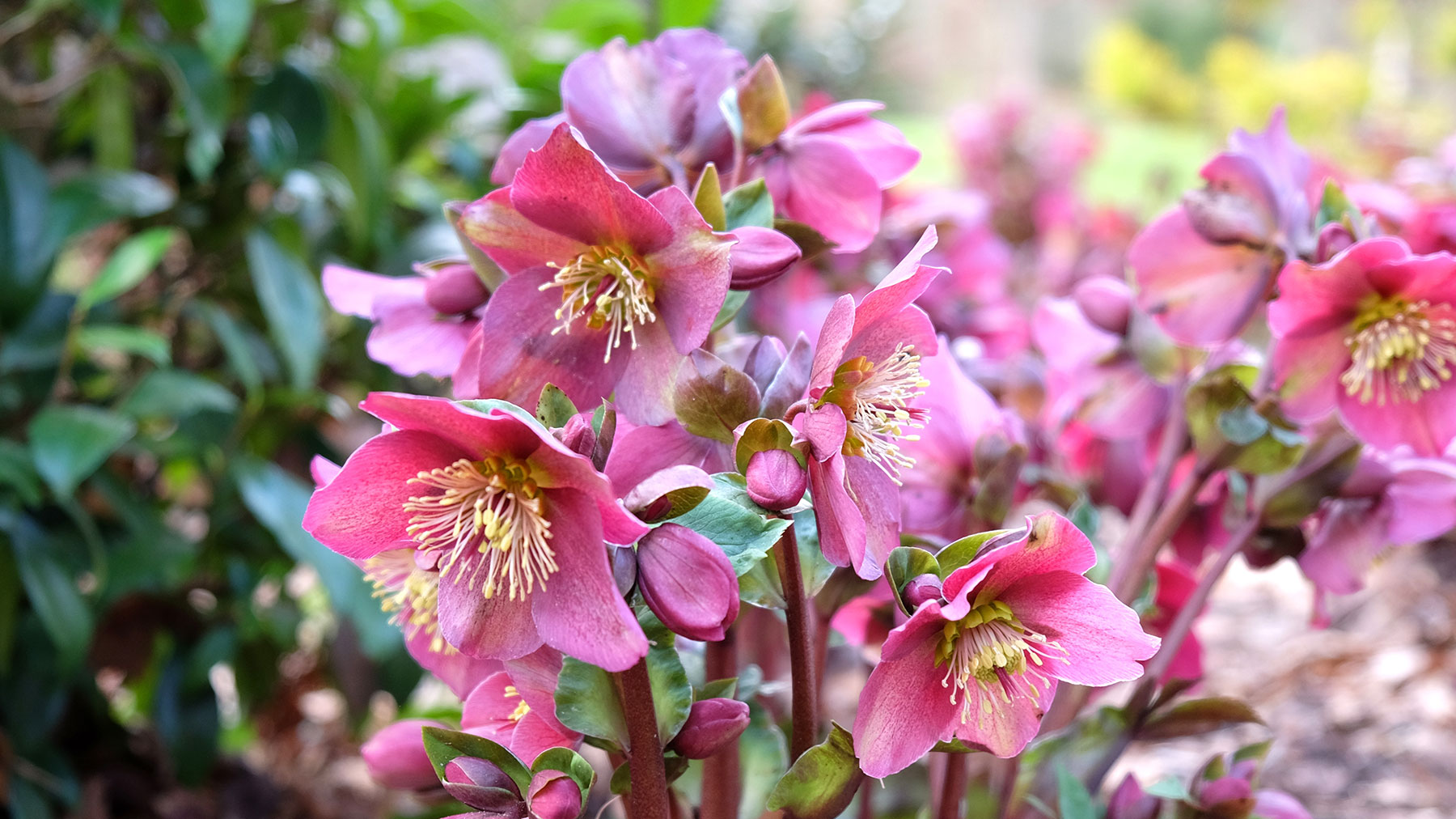
Hellebores are a very striking variety of winter plant, with flowers that tilt downwards as if they are nodding off to sleep. While you can find lighter-shaded blooms of white, pink or green, some of the most popular varietals are the ones with dark, dramatic flowers in deep purple or almost black colors. The foliage is mostly evergreen and creates an attractive contrast to the flowers, as well as to any snow in the vicinity. Hellebores are sometimes known as Christmas roses or Lenten roses, thanks to their shape and the time of year that they bloom, so they are a safe choice for any winter garden; the warmer your winters, the earlier they will flower.
Sign up to get the BEST of Tom's Guide direct to your inbox.
Get instant access to breaking news, the hottest reviews, great deals and helpful tips.
Hellebores should not be planted too deeply in the soil and prefer rich, well-drained, moist soil. Plant them on a higher slope if you’d like a better view of their downward-facing flowers. They are perennials, meaning they will bloom year after year, and are known for being particularly cold-hardy which is ideal for anyone in a harsher climate.
3. Christmas Cactus
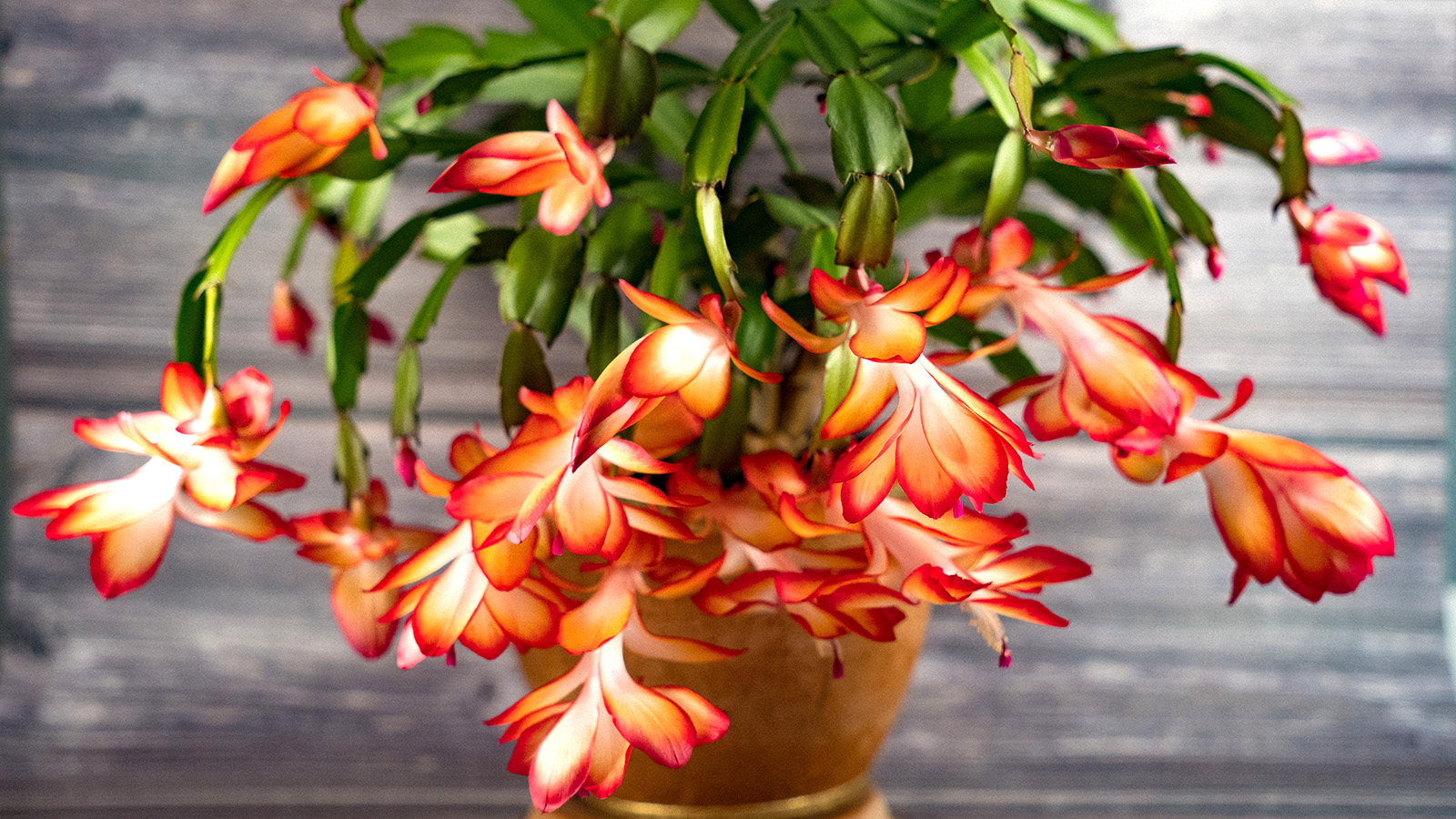
It’s in the name: Christmas cactus is a fun flowering cactus that will bring a flush of color to your Christmas decor. Rather than traditional stems and leaves, this plant has almost fleshy segmented stems that feature serrated edges and trail downwards over the sides of their container. The more room your cactus has to grow, the greater the trailing stems will be. At the beginning of winter, the cactus will begin to flower with fuschia, magenta or white colored blooms that are tubular and also dangle downwards. This creates an interesting silhouette that is ideal to drape over a window ledge or shelf.
Christmas cacti can be a little more difficult to grow than other cactus species. They require at least 12 hours of darkness per night to promote flowering in the winter, but need a few hours of diffused light daily to prompt initial growth. They prefer humid conditions and their soil should be allowed to dry out thoroughly between waterings. While you can keep your cactus outside during the warmer weather, be sure to move it indoors in September or October, to protect it from cold temperatures.
4. Pansy
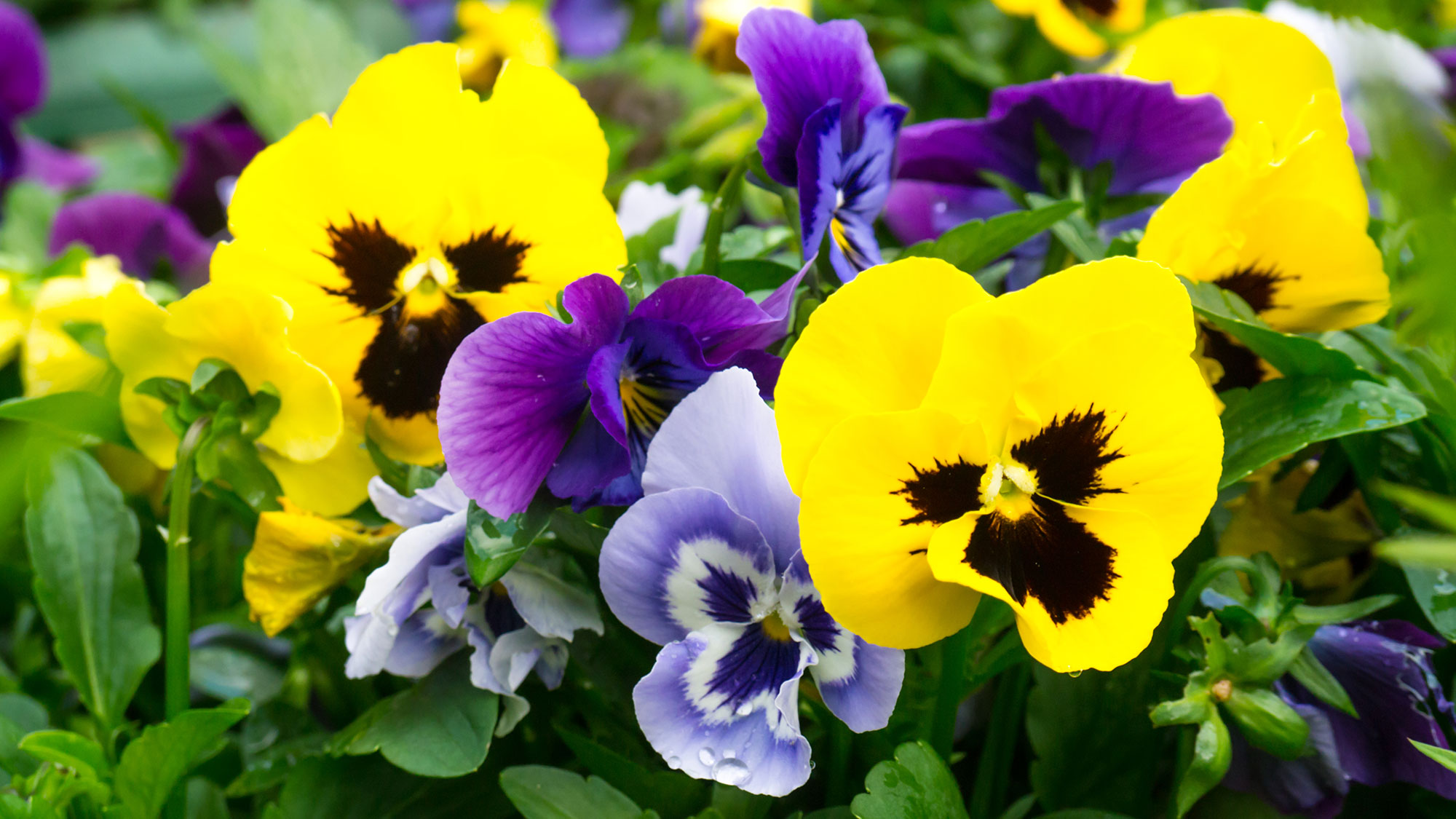
The pansy is a beloved childhood favorite for many people, with its polychromatic flower that resembles a face. Pansies can be planted in the fall and be flowering just a few weeks later, in various vibrant hues like purple, yellow and pink. While the harshest winter temperatures may kill off some blooms, pansies will often undergo a second flowering in the early spring so you can get twice as much reward for your effort.
This is a smaller plant that will pop up through the snow for dramatic effect, as long as you’ve planted them early enough to establish their root system. Pansies can grow in partial or full sun and will thrive best with a thin layer of mulch during particularly cold winters. Although they are an annual, many gardeners choose to replant them every year since they are so visually impactful.
5. Amaryllis

If you’re looking for a smaller plant that will make an outsized statement, then an amaryllis is a perfect choice. The amaryllis plant features large, trumpet-shaped flowers on thick, leafless stalks so all attention goes to the bloom itself. They reach 1-2 feet in height and grow out of a large bulb, which can be purchased planted or bare; many places will wrap the bulb in attractive packaging, making it a good gift option.
Amaryllis can occur either in single or double form and come in many different colors, although red and white are the most common (and Christmas-appropriate). To promote blooming, you may want to use a phosphorus-heavy fertilizer and be sure to move the plant out of direct sunlight once the flowers have started blooming. Most amaryllis will be kept inside and this is recommended, as the plants are not as resilient to winter frosts as some other flowers on this list.
Ideal for amaryllis, this phosphorus-heavy fertilizer will keep your amaryllis thriving all through the winter months. This particular option claims to make blooms bigger, and make them last for longer.
6. Winterberry
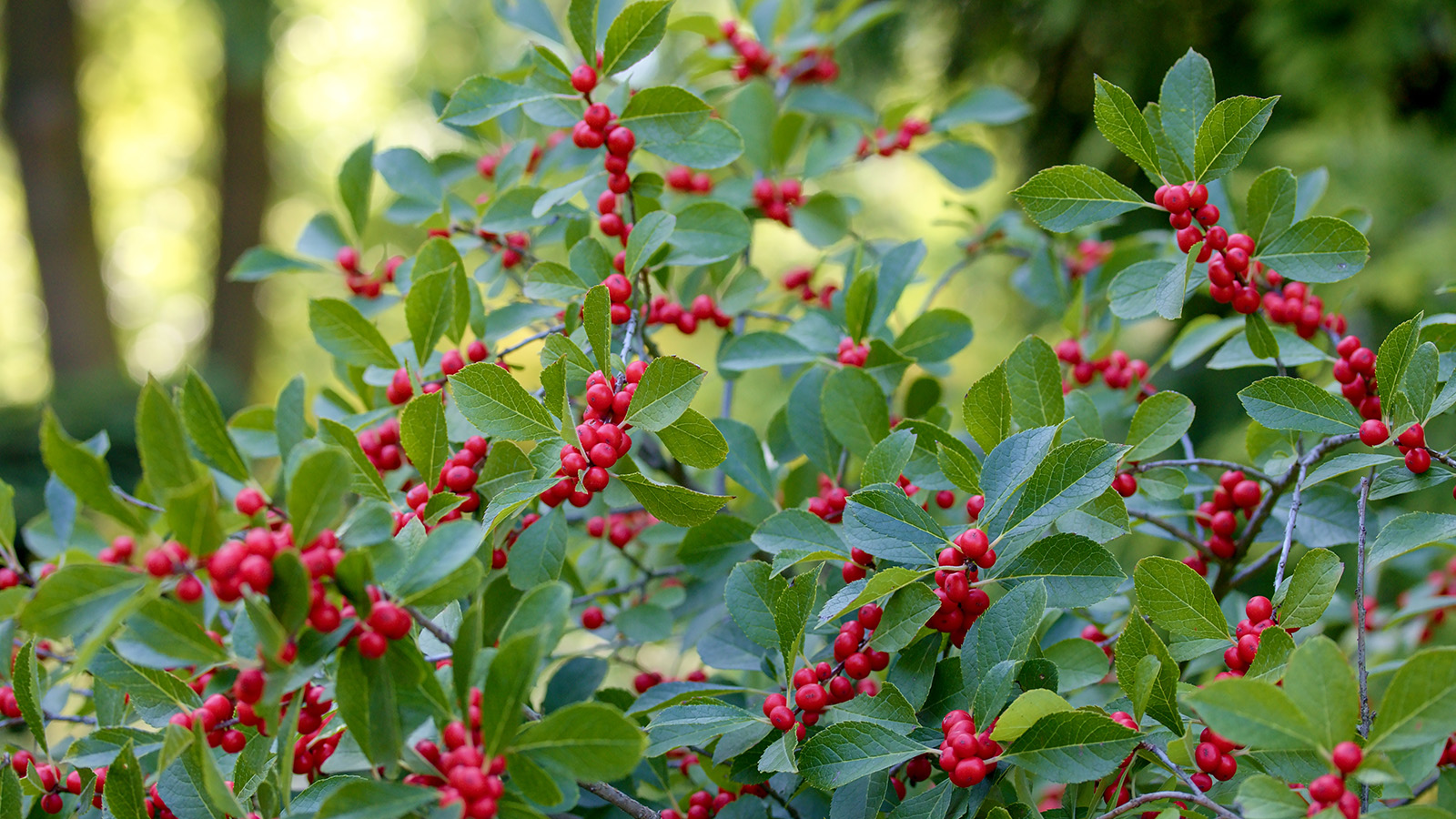
Not all color in the garden needs to come from flowers. Berries are a traditional source of vibrancy in the wintertime and the winterberry plant may be the clearest example why. This shrub has dark, woody stems that are covered with lush green foliage during the spring and summer, which falls away in the autumn unlike other holly species.
This means that the winterberry forms its bright red berries on otherwise bare branches, which looks particularly dramatic against a snowy landscape. In order for these berries to form, you will need to have at least one male and female species of the plant; otherwise the female plant will not be pollinated. However, one male plant can pollinate several female plants. Some varieties will also grow yellow berries, which can be equally attractive and vibrant during the winter. While winterberries are shade tolerant, too much shade may inhibit berry growth. This is also true for drought or stress, so be sure to place a light layer of mulch and water regularly.
7. Poinsettia
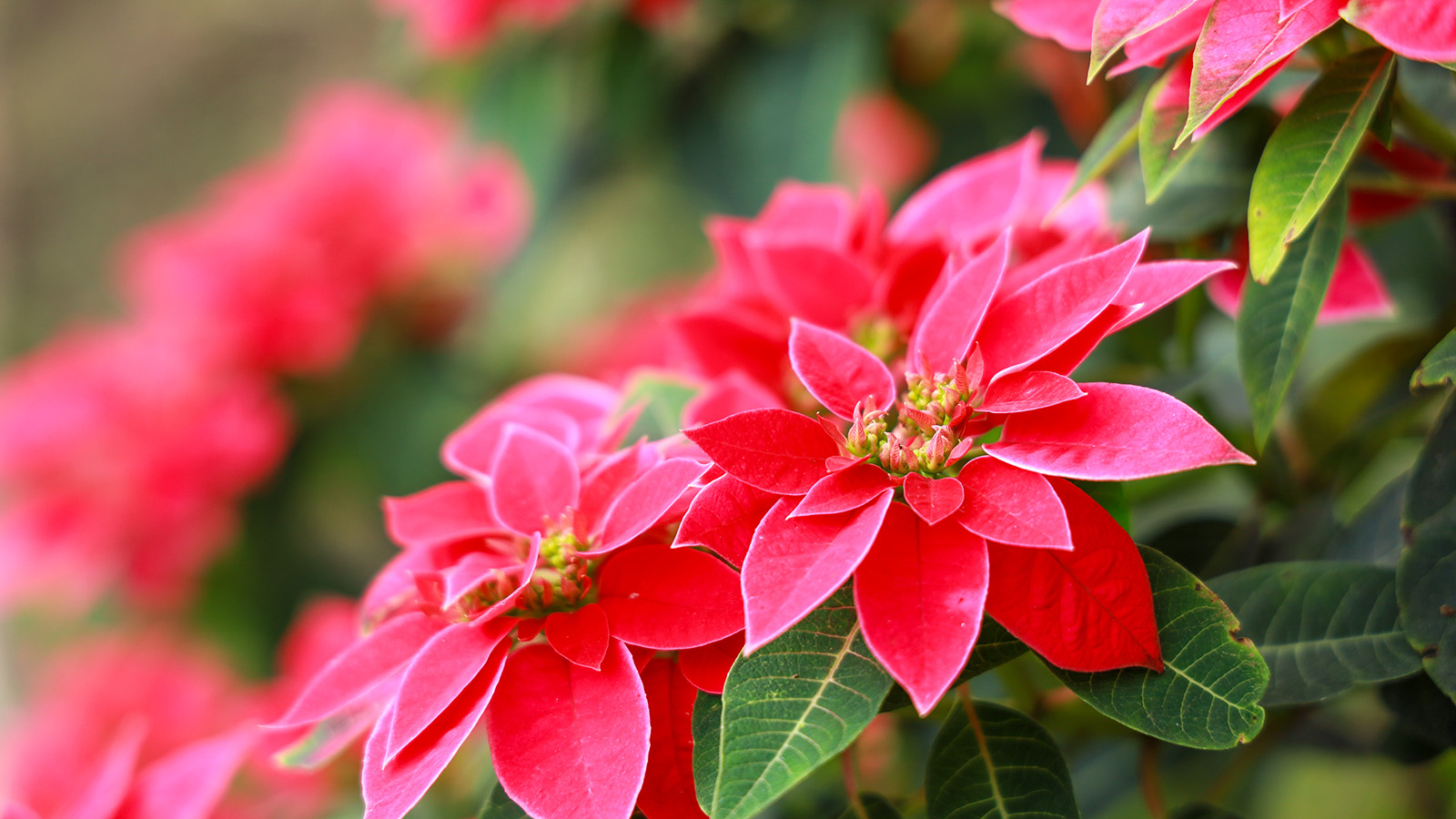
One of the most common plants in winter gardens, poinsettias have become a go-to choice for gardeners looking to add color to Christmas displays. While they may look like they have large blooms, the bright red of the poinsettia actually comes from its wide leaves or bracts, which change color as the days get shorter and colder. In fact, the poinsettia does feature flowers but they are very small and yellow in color, forming in the center of these colorful bracts. The red variety is perhaps the most well-known, but you can also find poinsettias in pink, white and even patterned hues.
To grow poinsettias, make sure they are not exposed to harsh temperatures; while they grow in the winter months, they do not like cold temperatures as they originate from the warmer climate of Mexico. They can be planted outdoors initially, where they can enjoy warmth and sunlight, but should then be moved inside and kept out of the way of any sharp temperature fluctuations, like a cold draft or fan. Poinsettias like moist soil and will wilt if left underwatered, but overwatering can lead to root rot so be careful to maintain the right balance.
8. Cyclamen
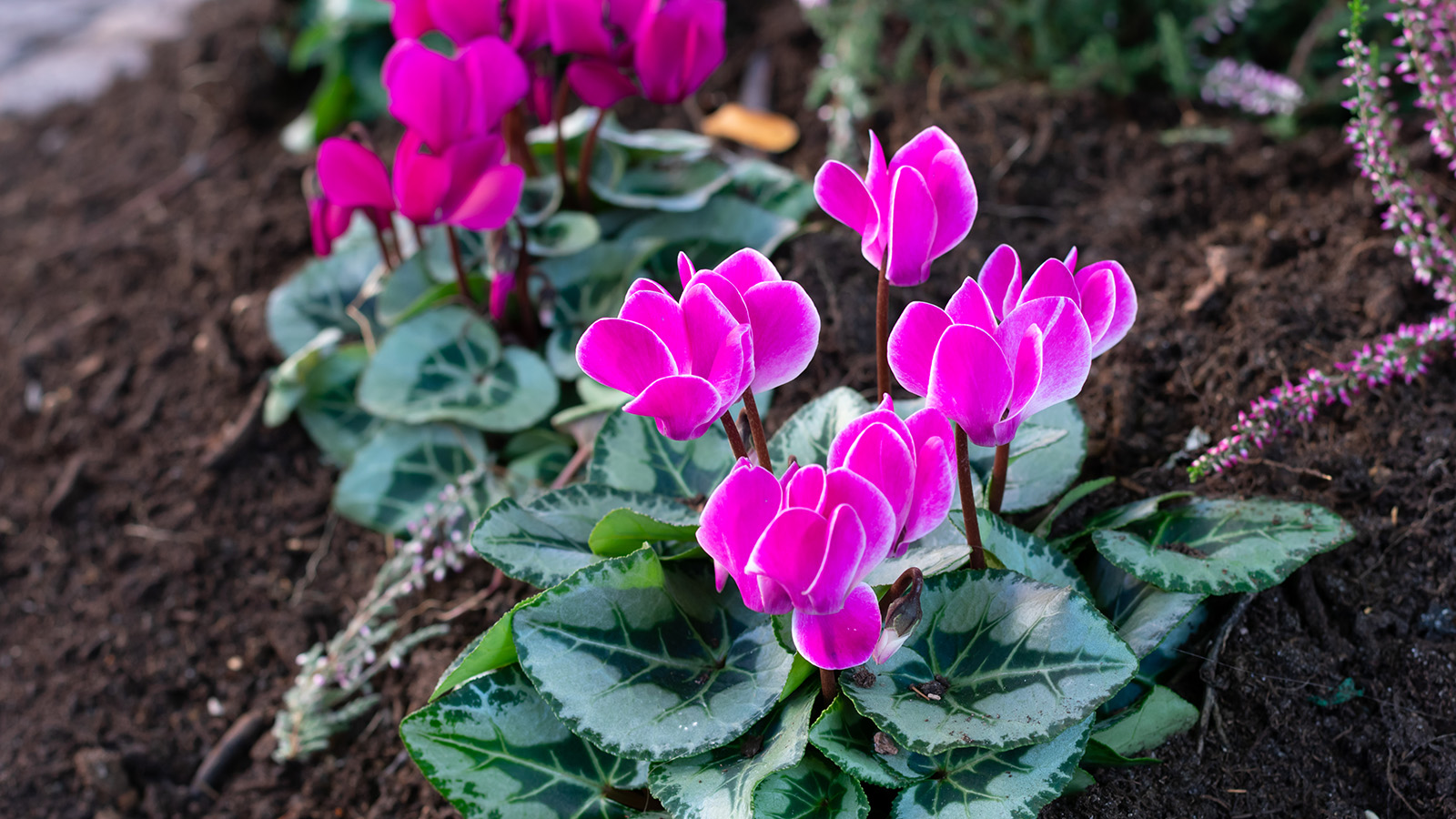
For a rush of color that will last through the deep winter and into spring, cyclamen is a great choice. These hardy plants can withstand a range of conditions, from bright indirect light to full shade, and are commonly grown as both houseplants and outdoor plants. Cyclamen is small in size with silver-marbled, heart-shaped leaves and small fragrant flowers that grow on tall stems above the leaves; the foliage forms a kind of blanket underneath.
Blooms can be white, pink, red or purple in color and usually emerge from early winter through to spring. You can extend this blooming period by plucking off any fading or dead flowerheads. Like most of the plants on this list, cyclamen prefers moist yet well-drained acidic soil and should be watered frequently during its growing season. During the summer, in its dormancy period, this watering can be less frequent. If treated well, cyclamen can return next year to flower again and so it’s a good choice for recurring wintertime color and scent.
9. Winter heather
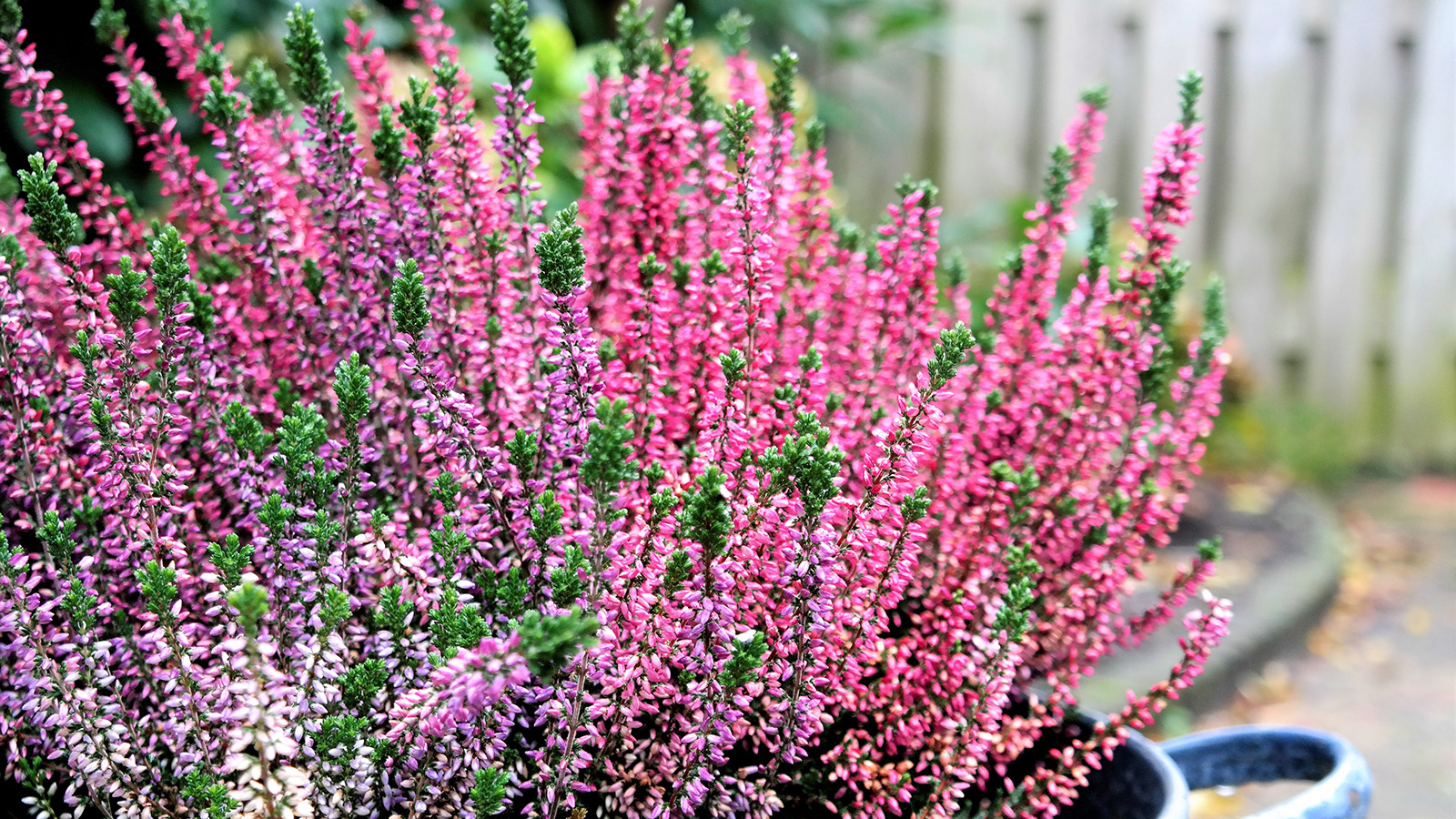
Heathers are a popular species of plant, but often under-recognized as a winter-time option. These shrubs are evergreen and provide a nice flush of green color during the cold season, but also are known to bloom large quantities of tiny flowers. These dense bell-like flowers can come in shades of white, pink and mauve and can be especially attractive when mixed together, forming a textured canopy of color.
Winter heathers can be planted in containers or window boxes, or planted as ground cover. You may even choose to place them in containers as winter displays, before replanting in the garden come the spring. Some species will grow taller than others or more compactly than others, so be sure to check which variety you’re buying before planting. While this plant can handle a few hours of shade each day, the best flowering will occur if you plant the heather in full sunlight. Heather is more tolerant of limey soil than most other plants, but prefers well-drained and acidic soil if possible.
More from Tom's Guide
Madeleine Streets is a writer and content manager based in New York City. She covers an eclectic mix of lifestyle, technology, finance and health and has been published in Tom's Guide, Women's Wear Daily, SELF, Observer, Footwear News and others. Originally from London, Madeleine has a penchant for tea, baking and moody weather. When she’s not writing, you can find her exploring the city’s bookstores, hunting down new restaurants, fostering cats and cheering on Arsenal FC.
